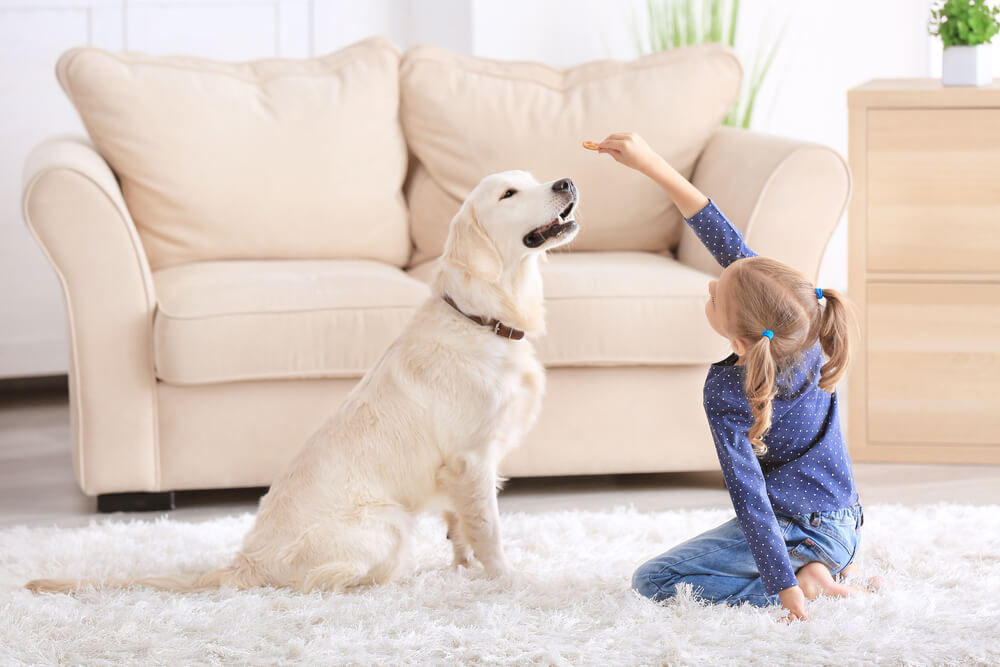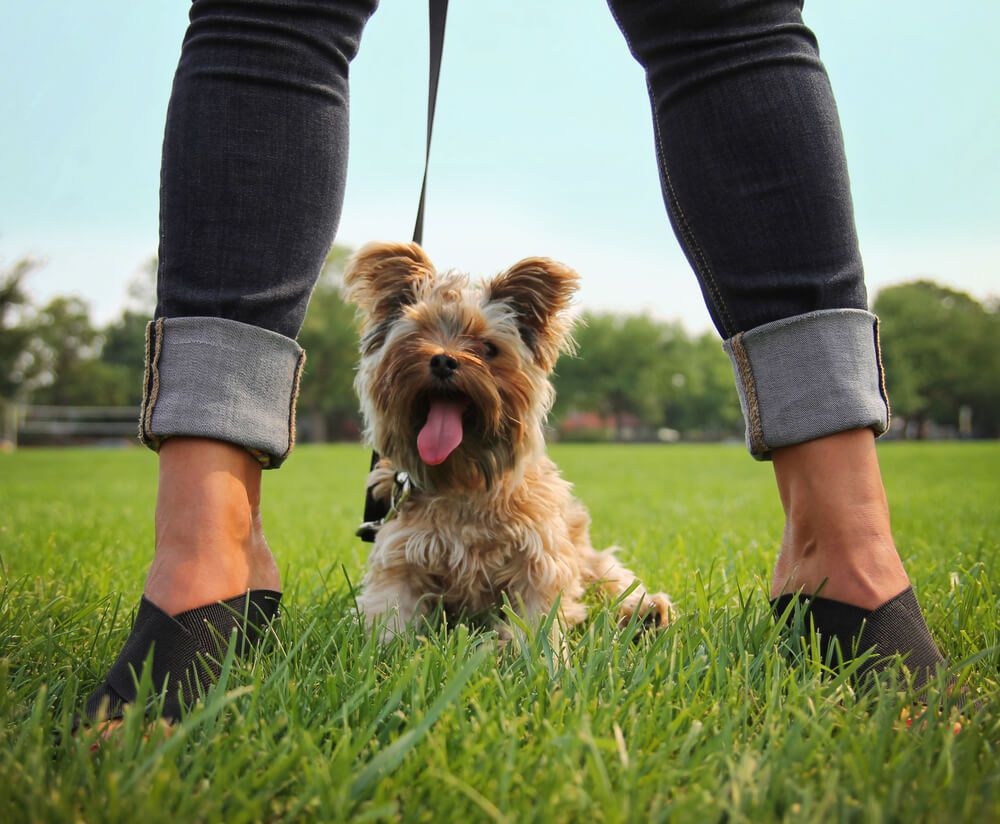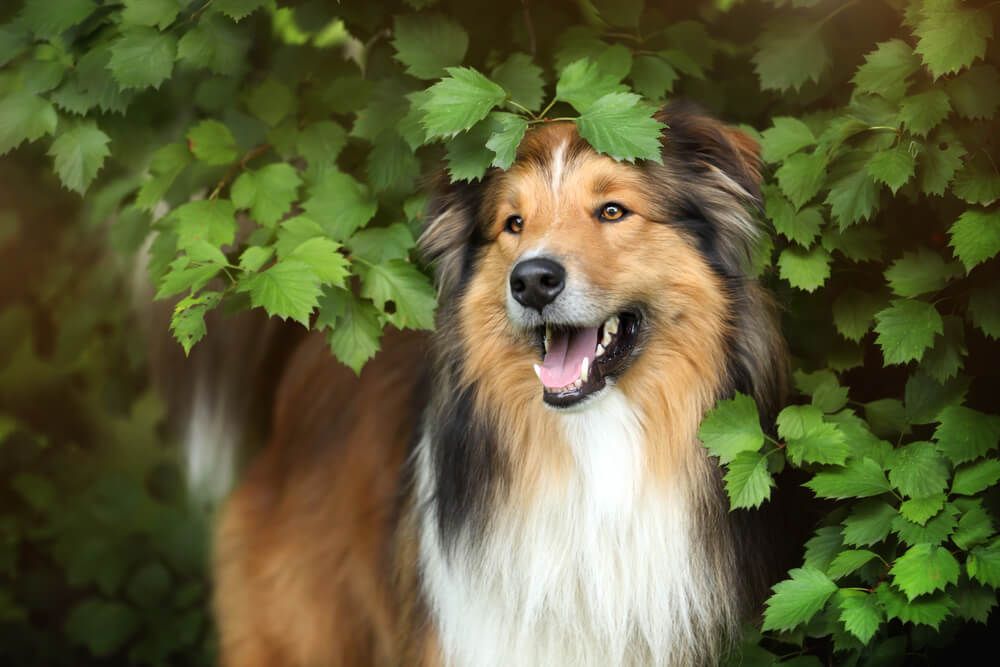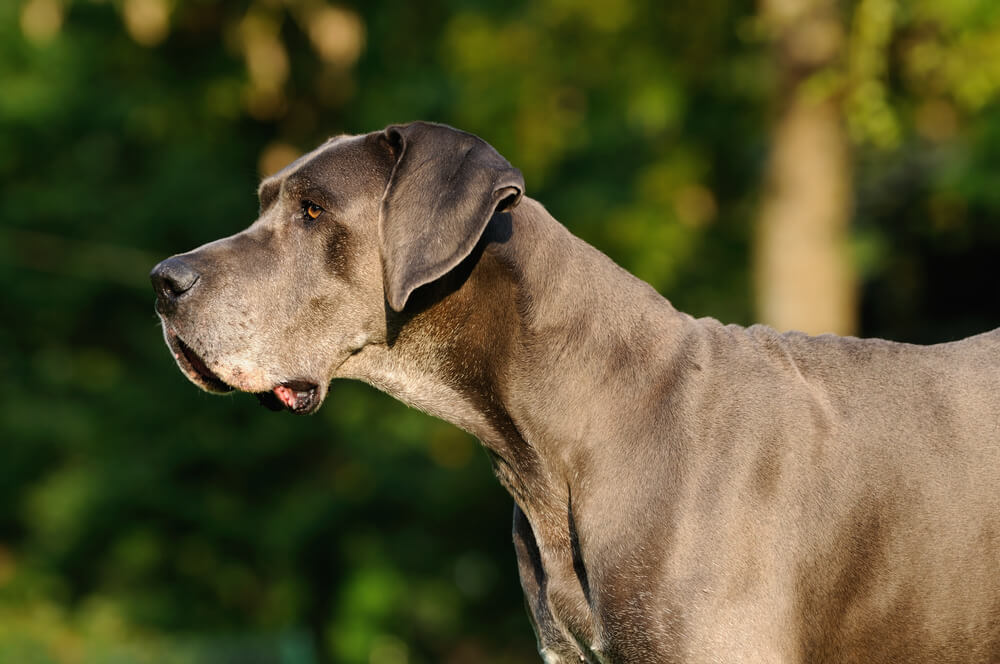Hey Ollie blog readers! We’re offering you an exclusive 60% OFF your starter box! Try now!
Good dog training can be the foundation of a strong relationship with your dog. Owners who have well-trained dogs generally seem to have a better relationship with their pups.
“Training to me is more than just commands, it’s about building a relationship and having a bond with your dog from the get-go,” says Robert McLaughlin, the owner of HD Dog Training in Pennsylvania.
“If you cannot guarantee your dog 15-20 minutes a day of training then you are not in the right place to purchase a dog. Dogs who aren’t trained and socialized right end up scared with no confidence which can turn into aggression or reactivity issues.” He further adds that these issues are the type that land dogs in the position where they’re being rehomed or sent to a shelter.
To combat this, Robert advises prospective dog owners that the best time to begin training is before the dog even comes. He suggests that you research any breed you are interested in deeply – this includes grooming, medical costs, food costs, the time you’ll need to spend training and socializing your new dog, boarding costs, and if the dog will thrive with you.
Seven easiest dog breeds to train
While there are never any guarantees, these 7 popular breeds tend to be reported as easy to train. Remember to consider your lifestyle and how the dog will live with you before bringing a dog into your home.
Robert recommends spending some time looking at your dog’s life through the dog’s eyes. Would you be happy to live that way? Would you feel safe, loved and confident? These are really good questions to ask yourself as you consider bringing a dog home and you begin the process of training and socialization.
While this list encompasses a variety of types of dogs, it is important to consider that some of these breeds are larger and will need a bit more space and exercise than others. Make sure that you’re taking this and your overall lifestyle into consideration. This will help set you and your new best friend up for a successful relationship. Even if your dog is easy to train, you won’t see results overnight. Training is an ongoing process and requires the commitment of everyone who will be living and working with your dog.
1. Golden Retriever

Golden Retrievers are one of the most popular family dogs in the US. According to the American Kennel Club, they rank third in breed popularity out of 195 breeds. Golden retrievers are friendly dogs who do well in a family setting but also have been trained to hunt, perform search and rescue operations, or act as service dogs performing a variety of tasks to help people regain their independence.
2. Boston Terriers
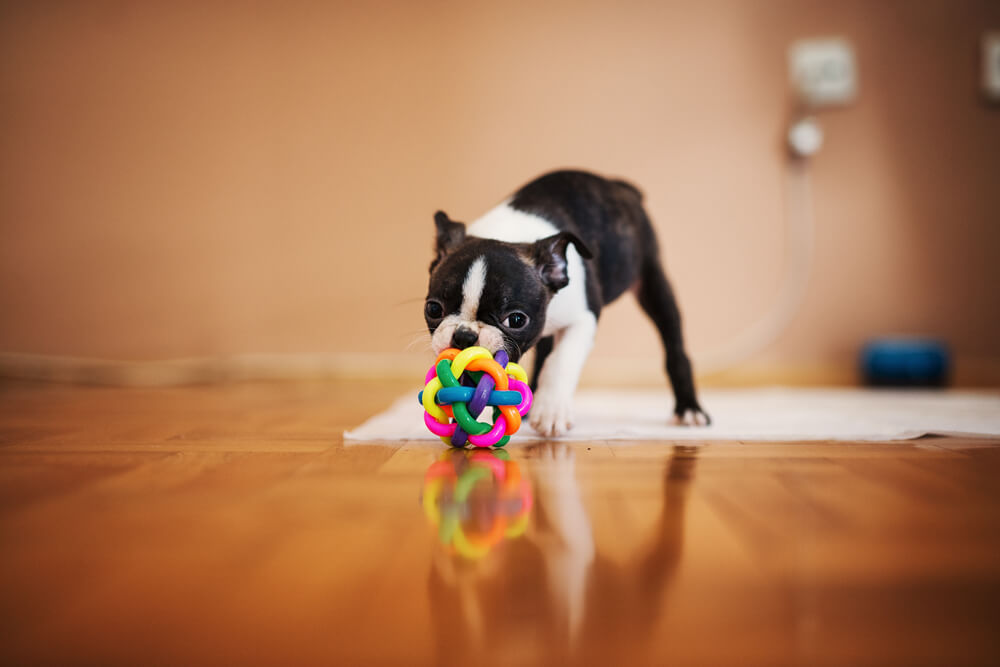
Boston terriers are not only easy to train but adaptable to city life. They will do well with owners who live a more urban lifestyle. They get along well with others and can also learn more than just basic obedience. Some Boston Terriers excel at sports like Agility or even go on to earn some serious trick titles.
3. French Bulldog

Another breed that tends to run on the smaller side, as bulldogs top out around 50 pounds. These “low riders” are great family dogs and tend to learn to fit in with a family quickly. You’ll want to make sure to give them adequate exercise as they are also prone to weight gain.
4. Goldendoodle
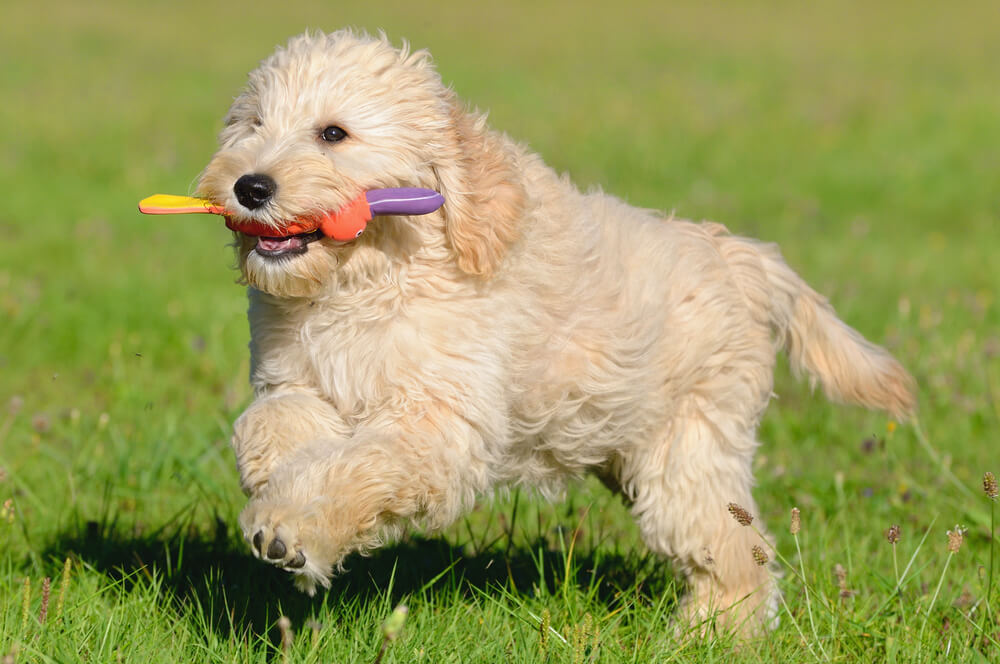
These pups are a cross between two very bright breeds, the Golden Retriever and the Poodle. Doodles come in various sizes ranging from standard to a more petite ‘mini’. These designer dogs were bred to be compatible with folks who have allergies. Both of the breeds used to create Golden Doodles are smart and family-friendly, making these pups popular with families.
5. Pug

This beloved breed lives to please its owners. They are known for being comedians and will do anything for a laugh. Don’t be fooled though, these dogs are as smart as they are silly. Pugs fit in well with most families and can live in smaller homes or apartments as they are also on the petite side.
6. Maltese
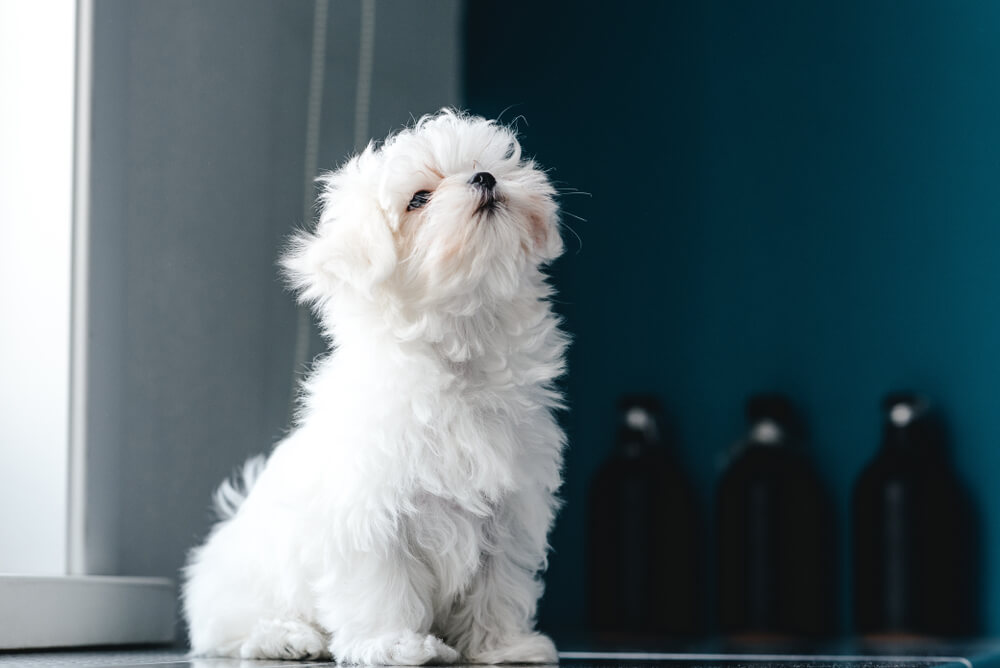
The Maltese is another dog that was bred as a companion. This means that they enjoy spending time around the house with you. They are on the easier to train side as they can fall into a routine. With some positive reinforcement, you can also teach these pups a few tricks beyond just sit and down!
7. St.Bernard

Saint Bernards are known for their ability to drool, but did you also know they make great family dogs? The AKC touts them as being friendly, watchful and patient with children. Be warned though, males top out around 180 pounds and females at 140. You’ll want to make sure to teach them good leash manners when they’re young so they don’t learn to pull.
Training Tips
While every dog is different and no two dogs will learn exactly the same way, here are a few general tips you can use to set yourself and your pup up for success.
Start young (or immediately when bringing home a rescue)
In order for training to be successful, your best shot is to start when you bring a puppy (or dog) into your home. Establish a routine and help your dog acclimate to it. You will want to keep training sessions short and frequent. Puppies have short attention spans and tend to get bored or frustrated easily. Make a plan for training and stick to it. You might try 2-3 sessions a day that are 5 minutes each. You can even break up the training time with some play, another great way to bond with your dog.
Use positive reinforcement
Training can be a lot of fun for both you and your dog. It isn’t just about barking commands and getting your dog to understand you’re in charge. You can use puzzles, games and lots of rewards when training. When you’re introducing something new to your pup, you want to keep the experience positive. Go slowly and use lots of praise and rewards. Some dogs respond better to food rewards, these can be higher value treats like grilled chicken, a piece of cheese or other tasty morsels.
Hire a professional
If you are struggling with training, dealing with aggression or reactivity issues or just generally want an advantage, consider hiring a professional trainer. Look for a trainer who has credentials like CPDT-KA after their name and uses positive reinforcement and fear-free training methods.
Stay consistent
Remember that training is not a one-time event. It doesn’t just happen in an obedience class or private lesson. You’ll need to continue to practice with your pup and reinforce the behaviors you want. This is much easier to do if you work together and keep things fun!
The Ollie blog is devoted to helping pet parents lead healthier lives with their pups. If you want to learn more about our fresh, human-grade food, check out MyOllie.com.
Tagged As:

The nutrition your dog needs,
the food they want.

Enjoying our articles? Subscribe our Newsletters and get new articles directly to your inbox
You might also like
25 March 2025
4 MINS READ
Yorkie Pros & Cons: Is a Yorkie the Right Dog for You?
At around 7 inches tall and weighing just 7 pounds, the Yorkshire terrier (Yorkie for short) can fit a lot of personality into their tiny bodies. If you’re looking for a new best friend and have …
25 March 2025
5 MINS READ
Collie Temperament: 6 Personality Traits Explained to Get to Know Collies Better
Described by the American Kennel Club as devoted, graceful and proud, the collie is ranked 38th on their list of most popular breeds. While many people think of Lassie when they think of the coll…
25 March 2025
7 MINS READ
Great Dane Temperament & Personality: Get to Know Your Dog
Usually, the first word that comes to mind when you think of a Great Dane is larger than life! These big, beautiful dogs have a way of capturing attention wherever they go. Have you ever wondered w…
